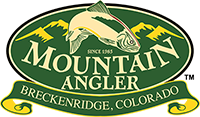Why Are Riparian Zones So Important to our Ecosystem?

Our Blue River
Healthy riparian zones serve to capture carbon and thus contribute to fighting global climate change. They are the areas bordering rivers and other bodies of surface water. They provide many environmental and recreational benefits to streams, groundwater, and downstream land areas. Groundwater is usually found at shallower depths in riparian zones than in the surrounding landscape. These areas are visually defined by a greenbelt with a characteristic suite of plants that are adapted to and depend on the shallow water table.
The extra moisture in riparian zones and associated wetlands, combined with the abundance of vegetation, creates a mat of decomposing material on top of the soil. This organic-rich layer aids in conserving moisture. The vegetation and spongelike quality of soils in wetlands, floodplains and riparian zones protect surface water in several ways.
Often, interactions in these areas regulate river stream temperature in ways beneficial to fish and other aquatic creatures. These areas serve as nature’s water treatment facilities for our watersheds. They can capture and filter surface runoff that flows from higher ground. Live vegetation and the absorbent mat of accumulated plant litter and humus help to trap sediments before they reach the river. Soil microbes that thrive in this moist environment break down chemical pollutants like hydrocarbons, further protecting water quality.
In the mountainous western US, most riparian habitats extend many miles along the uninterrupted length of narrow streams and rivers. These habitats create a relationship between water and land. Habitats are sensitive indicators of natural and man-made disturbances to the water, land, and to the entire watershed.
Factors such as local climate, water flow, and nutrient supply create unique riparian habitats. Researchers have identified other features, such as distinctive soil characteristics, that help riparian zones protect and replenish water supplies and support diverse plant and wildlife communities.















